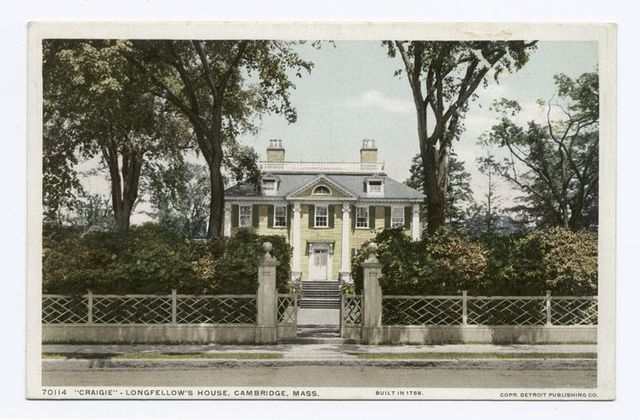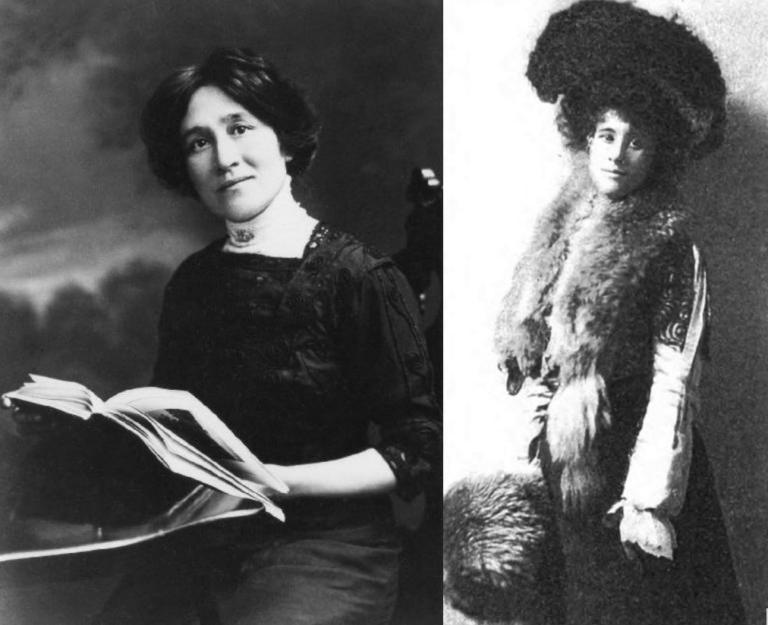“Day to be recorded with sunbeams! Day of light and love!”: Longfellow and the Weather

The poet of “Paul Revere’s Ride” and the 1855 epic The Song of Hiawatha imagined a verse for every season—and, to the distaste of Modernists, a rhyme to accompany it. Henry Wadsworth Longfellow filled his poetry with memorable rhymes suited to the masses, becoming one of the most popular American writers of the nineteenth century, a cofounder of The Atlantic Monthly, and among New England’s cherished “Fireside Poets.” Instead of autobiography or current affairs, Longfellow took readers on historical escapades, mythological metaphors, trips to foreign lands—the adventures of other men, other times and places. The “fireside” accessibility of his published works made him a national celebrity, while inviting fans into a curated version of his life in which other actors took center stage and his privacy remained guarded.
Natural imagery like flora, fauna, seascapes, and the untamed elements offered familiarity alongside escapism and became synonymous with Longfellow’s extensive catalog. Weather, humanity’s universal topic, saturated his verse and legacy, with contemporary Henry David Thoreau declaring Longfellow “one who is weatherwise.” His poem “The Rainy Day,” published in his 1842 Ballads and Other Poems, famously relates the cyclical natures of both weather and life, employing a rhythm similar to the monotony of the beating rain. With weather as guise, the poem also offers a rare window into his darker emotional state: “My life is cold, and dark, and dreary; / It rains, and the wind is never weary.” Both the literal and figurative rainy days were approachable to reader and guarded poet alike. Weather—where emotions could imitate the elements—became Longfellow’s chosen intermediary for sparingly offered glimpses into his private life in his published works. Anything confessional he filtered through the universal, anything passionate through the quotidian. But it is in the unguarded seams of his rarely seen, unedited journals that the full scope of Longfellow’s relationship to the weather emerges.
An avid diarist throughout his life, Longfellow began his daily entries with a documentation of the day’s weather de rigueur of the period. Housed at Harvard University’s Houghton Library, his journals contain hundreds of these overlooked “weather reports,” some of which remain unpublished, condensed, or edited out entirely from subsequent publications, where the editorial focus has stayed on his published work and correspondence with famous writers of the period. Rather than obligatory filler, however, these weather reports document a lifelong fascination, even partnership, with the weather acting as Longfellow’s trusted, often fickle, companion and muse. The elements served as a source of continued inspiration and an outlet for his guarded emotions, with the ritual task of documenting the daily weather revealing Longfellow’s creative process and his failed attempts at separating his private life—from the unglamorous, mundane day-to-day of the belabored writer to the inner turmoil of the depressive—from the published prose and his own public persona. The poetic and the personal merge in the mundane—Longfellow’s unconscious emissary—painting a more vivid, complete picture of both poet and process.
*
OCTOBER 1, 1838: “The river in the meadow in front of my house spreads out into a silver lake, and the black shadows lie upon the grass like engravings in a book. Autumn has written his rubric on the illuminated leaves. The wind turns them over and chants, like a friar.”
From his window at historic Craigie House (now the Vassall-Craigie-Longfellow House) in Cambridge, Massachusetts, where George Washington led the uprising against England from 1775 to 1776 and where Longfellow lived for nearly fifty years, the poet bore captive witness to the unpredictable phenomena and meteorological conditions that comprise New England weather. He recorded elemental anomalies such as “hail stones as big as grapes, and some as big as potatoes” on August 9, 1878, and a January day two years earlier with the “thermometer at 76!” with giddy delight.
The nineteenth century was a golden age for diarists and journal keepers. Most stuck to the basics—day-to-day comings and goings and a brief description of the day’s weather, the neutral, polite topic of conversation for generations to come. Brief, minimalist entries jumpstarted by a weather report were an easy way to ensure continuity and the formation of a daily habit. Longfellow’s own journals span much of his life and include papers and notebooks from travels abroad as a young man and his time at Bowdoin College onward until his death. Part of an almanac culture, American diarists had long documented changes to the climate before the advent of the telegraph in 1837, which allowed enthusiasts to share regional weather data, and the establishment of the National Weather Service in 1870, when Longfellow was 63.
Though some of his entries were brief or contained on a quick record of the day’s temperature, it was Longfellow’s more lyrical descriptions that set his reports apart from those of the typical diarist, offering a glimpse into the mind and process of a poet at work, consciously or not. Instead of a windless or light rain, for example, he writes on December 1, 1865: “A gentle rain and mist covering the whole landscape. The river changed to a lake. Not a breath of wind. The brown leafless branches all at rest. A day of quiet and seclusion.” The “gentle” rain imbues a sense of calm over the river (now a “lake”), the wind, and the “brown leafless branches,” which are not dead but “at rest,” suggesting a restorative benefit to the fallowness of the landscape. This restorative quell extends to Longfellow as well, who breaks from the demands of work and celebrity for “quiet and seclusion.”
Longfellow’s weather documentation transformed more than it simply transcribed. A heavy rainstorm, for example, becomes a tempest, a favorite word of nineteenth-century Romantics for its denotative ability to equate the meteorological with the emotional. From November 10, 1845, he writes: “Last night we had a wild tempest of wind and rain; shaking the windows like a maniac, and howling about the house fiercely. Slept late, fanned by its vampire wings into a lethargy.” A true documentarian, Longfellow provides visceral details of the storm while also figuratively likening it to a fierce, uncontrolled creature. Like the British Romantics he emulated, he earnestly employs the pathetic fallacy as he did in his published “Rainy Day.” Instead of fear, this personified storm comforts the poet, ultimately lulling him into a deep sleep with its “vampire wings.” The excitement of chaotic weather could breed contentment for Longfellow.
More often than not, the tools and language of the poet merged with the practical task set before him in recording the weather. These reports could also parallel the language or rhythm of his published work. Observations like “Snow, deep snow . . . Winter sunsets more delicate than any” (January 2, 1877), and descriptions of snowscapes echo his published poem “Snow-flakes” in the 1863 collection “Birds of Passage”: “Silent, and soft, and slow / Descends the snow”). From January 17, 1879: “Real Winter at last. All white. A cloudy sky; seclusion; silence.” The storm outside, this time a blizzard, provided a sense of calm and quiet to the writer.
Beyond metaphors and similes, the specificity of his language helped measure and expound on the meteorological conditions he experienced. The relentless heat of September 16, 1877, felt as though “the Earth was falling into the Sun.” Another day of heat a week and a half later warranted an entirely different description: “To-day sirocco. I feel as limp and languid as Somebody’s poetry.” An avid linguist who penned the first complete American translation of Dante, Longfellow employed the Italian sirocco to express that particular Mediterranean wind that is both dry and moist, humid and dusty, sweeping from the North African deserts. It also adds a hint of autobiographical detail for the Italophile who had lived in Rome and wrote of sirocco in his 1835 travelogue Outre-mer: A Pilgrimage Beyond the Sea, as well as good humor, as he pokes fun at either all poets or perhaps one in particular.
The New England weather that surrounded Longfellow for most of his life served as a muse. He recalled days from his childhood in Maine simply as “damp mornings of early Spring, with loud crowing of cocks,” the start of a courtship with the seasons. On the first anniversary of his engagement to his second wife, the love his life, Frances “Fanny” Elizabeth Appleton after a long, fraught courtship, Longfellow commemorated the day in his journal: “The Tenth of May! Day to be recorded with sunbeams! Day of light and love! The day of our engagement; when in the bright morning—one year ago—I received Fanny’s note, and walked to town, amid the blossoms and sunshine and song of birds, with my heart full of gladness and my eyes full of tears!”
His overwhelming jubilation is preserved within the context of the fateful day’s weather to the point that it’s unclear whether he describes actual conditions or is providing romantic embellishment. Longfellow admitted that he saved memories “rather as poetic impressions than as prosaic facts,” so his weather reports offer a unique outlet into his qualitative understanding of his own life.
New England weather by reputation is unpredictable and ever-changing, a trait that Longfellow appreciated as a writer forever battling growing stagnant in his art. But the weather was also constant on the macro level, something he could rely on upon to greet him in the morning. Though ever-present, however, the weather was not always a friend. It could directly affect his work and productivity, as he writes on April 27, 1848: “A bright day but an east wind that filled my brain with mist.” A writer grappling with putting pen to page, he expressed dislike for prolonged consistent conditions that provided little inspiration. When the weather was unfavorable and unchanged, he felt a prisoner, and his work stifled: “The days are miserably like each other, when one shut up in the house” (January 20, 1874). Fending off his tendency towards gloom meant keeping busy through variety and ever-changing stimulation provided by the elements. He expressed boredom with the monotony of summer’s consistently good weather, raising the possibility that his weather kinship might not exist had he lived elsewhere in a more predictably temperate climate. “There is nothing more disagreeable than long-continued and enforced idleness; that is the only draw-back of Nahant and summer,” Longfellow wrote during an 1870 vacation. Idle meteorological conditions could also be a physical enemy to Longfellow who suffered from neuralgia, dyspepsia, vertigo, and general melancholia. “I like all kinds of weather except cold weather,” he confessed on February 21, 1870, noting the effects of prolonged bouts of cold on his health and psyche. On February 20, 1875, he writes: “A soft rainy day at last. Since Christmas I have been suffering the tortures of Neuralgia in the head, fostered and augmented by the cold and bitter north-west wind, that has been blowing for two months. With the change in the weather the pain is assuaged. I feel to-day like singing and shouting with joy.” Here, the wind that once lulled him to sleep with its “vampire wings” is now augmenting the tortures of his neuralgia, simply by its continuity. His only relief comes by “the change in the weather,” which is perhaps why some of his most compelling weather entries involve not particularly salient conditions but rather dramatic shifts in it.
The changing seasons in particular presented new possibilities and an uplifted Longfellow, with new poetic flourishes. From May 17, 1868: “Suddenly with a gush of song and sunshine after long days of rain and dreary weather spring and summer come together bride and bridegroom blush of youth and heat of passion.” Employing the tools of the poet, spring and summer are personified as bride and bridegroom after a long period of rainy days lifts to sunny skies. Longfellow’s passion is visceral. Autumn is also a welcome visitor: “Once more the ever welcome and ever glorious autumn,” he writes on September 2, 1838. “On the trees are no longer leaves only, but brown fruits. On the bushes no longer blossoms, but clusters of red berries. And the wind has a rough manliness in its voice,—not the tone of a lover, but of a husband.” The autumn harvest bears fruit and September is an “ever welcome,” productive visitor to Longfellow, still then an academic readying students into the autumn semester. The wind, once again rough, bestows a comforting, stable air of a husband instead of the presumably fleeting tone of a lover.
*
MARCH 18, 1838: “Tremendous snow-storm. Shut up all day. Through the gusts of the mighty north wind and the snow, the church bells seemed to cry for help. Winter has come back for his umbrella. Begone, old man, and wag not thy hoary beard at me!”
Unlike the personal glimpses seen in the weather reports, much of Longfellow’s journals read more as a daily ledger than soul-baring confessionals. He often showed a distinct reluctance to veer into his private thoughts as he recorded his day-to-day life. Particularly in his later years, Longfellow instead focused his notations on the “light occupations” of an author — endless letter writing, quick mentions of dinners with Nathaniel Hawthorne or Wilkie Collins, his daily comings and goings. His revelations are mostly limited to surface-level emotions, such as the “pang” he felt upon having a beloved Elm tree cut down or the joys of acquiring a new edition of Milton “carefully printed from the Author’s copies,” which are noted in the main body of his journal entries typically proceeding his weather report. Why this reticence to reveal? As a national celebrity and public figure, the likelihood of journal publication upon his death was almost certain, and he often—though not always—erred on the side of the impersonal rather than the private, despite enjoying his position as a writer of the people.
Along with many of the popular writers of the Victorian era, Longfellow’s contribution to literature was dismissed by Modernists for its derivative homage to its Romantic brethren, his egalitarian unpretentiousness, and verses that proved universal or banal depending on the viewpoint. In fact, in his newly-released biography of the writer, Cross of Snow: A Life of Henry Wadsworth Longfellow, Nicholas A. Basbanes calls him “the victim of an orchestrated dismissal that may well be unique in American literary history.” Despite the harshness of post-mortem critics, however, Longfellow found unprecedented success at home and abroad among nineteenth-century readers, with scholar Christoph Irm Scher calling him “America’s first ‘pop’ poet.” He is one of only three Americans memorialized at Westminster Abbey’s Poets’ Corner.
Longfellow fostered relationships with his readers, ever conscious of his own impact—celebrity even. His interaction with them was more mutual than was typical; he painstakingly answered his fan mail, which he received in excess of 20,000 letters during the height of his popularity and up until his death in 1882. “He was very conscientious about answering his large correspondence himself, and refused to have a secretary till the last few years of his life, sacrificing a great deal of his valuable time to answering trivial demands upon his kindness,” writes his son, Ernest Wadsworth Longfellow. He fulfilled requests for autographs and received a steady stream of random visitors darkening his easily located Cambridge door, a historic landmark down the road from the gates of Harvard University. Like letters written to Santa Claus, mail addressed simply to “Mr. Greatest Poet Longfellow” always found its way to his home. The poet also earnestly fostered genuine friendships with other famous authors whose work he respected, including sending gifts to Alfred, Lord Tennyson. He received fellow writers abroad and at home, all of whom made appearances in his journals, and gave the performance of extrovert, despite tending more towards the introvert in practice.
And so, in his publications, Longfellow shared with readers what he thought was relevant—polished poetic verse readable at any age or station in life—and they received what they thought was his most personal and invited him into their homes. Many readers unsurprisingly felt that they had developed a personal relationship with the man. But he denied them what he thought was too mundane or too personal, the “weather reports” being both. Longfellow recognized his own tendency towards emotional self-seclusion early in life, saying, “With me all deep feelings are silent ones” in an early letter to his brother Samuel Longfellow. He also openly struggled with documenting his life, especially when it would become part of his legacy: “It is hard work to live one’s life and record it,” he wrote in 1859. When portions of the journals were edited—often eliminating altogether or simplifying the weather reports— and posthumously published in the first volume of Life of Henry Wadsworth Longfellow with Extracts from His Journals and Correspondence by Samuel in 1886, the latter warned of their quotidian preoccupation in the preface: “Let it be remembered that the poet had already put the best of himself into his books” and that the poet let the reader in only “as far it is fitting.”
Longfellow’s avoidance of the personal in his journals is most obvious through the elision of major, life-changing events in his entries like the tragic, untimely death of his beloved Fanny, who died after her dress caught fire in 1861. Biographers often cite the event as the beginning of the end of both Longfellow’s glory days and his active cultivation of public persona. “No word of his bitter sorrow and anguish found expression in verse,” Samuel later wrote of his brother’s mourning. A prolonged break occurs in the journal after her death on July 9, 1861. He journals sparingly in the months that follow, a Tennyson quote and a reference to “desolate, desolate house” both hinting at his melancholia. Longfellow began translating Dante again, Samuel noting that the poet “felt the need of some continuous and tranquil occupation for his thoughts.” But his ritualistic weather reports offered both—continuity and tranquility— eventually leading Longfellow back to journaling, a sense of normalcy, and to the poetic.
Longfellow returns to his more elaborate weather reportage in the following September: “A week of fine autumnal weather . . . But the thoughts that are in my heart and brain I cannot record.” The weather is recorded while also prompting a direct, rare expression of his grief. By October 5, 1861, the poetic and the personal once again begin to merge in the mundane through more consistent journaling and expanded weather prose: “A week of delicious weather; the glimmer of golden leaves in the sunshine; the lilac hedge shot with the crimson creeper the river writing its silver S in the meadow; everything without full of loveliness. But within me the hunger, the famine of the heart!”
Eighteen years after Fanny’s death, on July 10, 1879, Longfellow finally mourned his wife through composition, writing the sonnet “The Cross of Snow,” referencing Mount of the Holy Cross in Colorado. He did not, however, publish the work or offer this private moment to his readers. The rare directness of his emotion is brought forth through elemental reference—the snow— in its final lines:
That, sun-defying, in its deep ravines
Displays a cross of snow upon its side.
Such is the cross I wear upon my breast
These eighteen years, through all the changing scenes
And seasons, changeless since the day she died.
Longfellow carried his sadness, his “cross of snow,” upon his chest, echoed in the trademark snowy white beard that he grew to hide the disfiguring scars borne from trying to save his wife from the fire. The change of seasons that once sparked joy in Longfellow is now expressed as “changeless,” leaving the poet without his common human denominator or sensory tethering expressing his weakening resolve in his final years. Samuel only published the poem after Longfellow’s death, as part of the second volume of Life of Henry Wadsworth Longfellow.
*
JULY 8, 1862: “Afternoon hazy and hot. A bath, and a soft hazy evening, with a copper moon, rayless and ominous, hanging over the motionless sea.”
As Longfellow aged, the ceaseless demands of celebrity grew tiresome and trivial in the wake of his defining loss. The fan letters and autograph requests continued to arrive, as did the strangers and tourists calling upon Craigie House for a glimpse of the white-bearded poet, ever the every-man now that he was touched by personal tragedy. Despite his weariness and desire to grieve alone, he continued to respond to these requests with good nature as if in accordance with an unspoken pact he had once made with his own success, no matter how detached he may have felt at times from his own public persona (one 1879 visitor famously thought the poet had already died when she called upon Craigie House.) Longfellow continued to write until his death in 1882, but his journal entries grew more sparse and infrequent with time, sometimes a concise weather report solely occupying the page of the day: “A rainy day. Pay taxes,” he wrote on October 7, 1875.
The New England environs—marked by the tempestuous elements and the changing of the seasons—like Longfellow’s life, had its ups and downs or “rainy days,” but each new day presented opportunity for inspiration even in his final years. His romantic anticipation for the transitional eccentricities of the seasons even bled into his literary fantasies. “Last night I dreamed of Emerson. He said, ‘The Spring will come again, but shall we see it, or only the eternal Spring up there!’ lifting both his hands on high,” he wrote in October of 1877. Emerson, presumably friend and Transcendentalist leader Ralph Waldo Emerson, appeared to him in a dream, assuring him that the Spring would always return, regardless of whether they were still alive to see it. There’s an excitement to the entry, suggesting that even the forward passage of time that brought him closer to death still seemed preferable to the monotony of old age and stagnant conditions outside.
The changing seasons meant progress while simultaneously reminding Longfellow of his own existence. The journals’ weather reports organically united private emotions with his artistic leanings and the beloved elemental world depicted in his poetry. In one of his final, lengthier journal entries, fog acts as enchanter, sparking intrigue to the aging author: “And March begins with mist and rain. I like fog, it is so mysterious, transfiguring all things. The wind drives it like a smoke. The brown branches of the trees are beautiful against the dusk of the sky” (March 1, 1881). The natural landscape before him once again became a source of inspiration, filtered through the artist’s eye. He recorded specific details of that day’s conditions—mist, rain, fog—but like the fog, his description transfigures the elements into a fuller scene with wind-driving action: smoke and a canvas against “the dusk of the sky.” For the poet who openly grappled with writing about his personal life and its relationship to his public persona, the weather brought both continuity and variety in action, something tangible and trustworthy to cling to in a storm.
Journals can be found in the Longfellow Papers, MS Am 1340, Houghton Library, Harvard University.
This piece was originally published on July 21, 2020.


